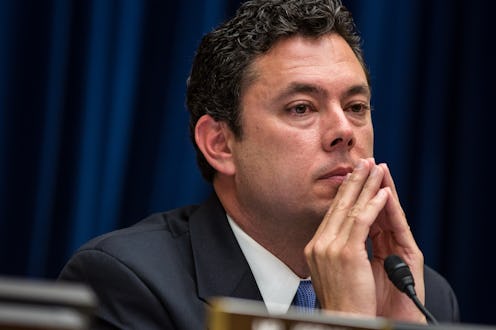News
This Website Converts Healthcare Costs To iPhones

Republicans are no strangers to putting their feet in their mouths — just ask GOP Rep. Jason Chaffetz, who suggested on CNN that low-income Americans should pay for healthcare rather than buying new iPhones. In response, a politically-conscious Florida marketing company created "How Many iPhones Does It Cost?", a website that puts healthcare costs in terms Republicans like Chaffetz might understand.
Chaffetz's tone-deaf response might not have been as bad as Ben Carson's slavery gaffe, but nevertheless, it was tone-deaf at best. In defense of the new Republican healthcare draft's elimination of the Affordable Care Act's individual mandate, Chaffetz said:
Americans have choices. And they've got to make a choice. And so, maybe rather than getting that new iPhone that they just love and they want to go spend hundreds of dollars on that, maybe they should invest it in their own health care. They've got to make those decisions for themselves.
Given the fact that it costs about two-and-a-half months of average healthcare premiums under the ACA to pay for a new iPhone 7, the fine folks at CATECOMM, a marketing agency in Florida, created their ingenious healthcare-to-iPhone cost converter, relying on annual premiums to calculate how many iPhones it would cost to afford a year's worth of normal healthcare premiums.
Monthly and annual healthcare premiums are, of course, variable based on location, health status, and a number of other factors. The National Conference of State Legislatures estimated that the average annual premium for an American family is $18,142. According to "How Many iPhones Does It Cost," that converts to roughly 26 iPhones. That might be doable for Chaffetz, who along with his fellow Congresspeople makes $174,000 a year, but for those who fall under the poverty line of roughly $19,000 annually for a three-person household, that's impossible to the point of absurdity.
The specific argument that poor people shouldn't purchase smartphones is an extension of the longstanding myth that people keep themselves in poverty by spending their money unnecessarily on "luxury" products like electronics, clothes that aren't from Wal-Mart or Goodwill, and fast food — by this formula, even air conditioning is considered a luxury. Those who make that argument have obviously never sweated through a summer day without air conditioning in New York or DC.
Chaffetz's parroted claim that lower-income people should save the money they spend on their iPhones is one of the most tired and classist tropes imaginable, and is unfortunately not limited to Republicans. I've even heard this one personally — a former friend told me I couldn't really be poor because I have an iPhone despite the fact that I was helping my mom pay her bills on top of my own at the time.
Smartphone ownership is not that huge a luxury — not only do an estimated 77 percent of Americans own smartphones, but many low-income people use them in lieu of computers to apply for jobs and access other necessities that are almost exclusively found online. Saying a low-income person should choose between their smartphone and their healthcare isn't just classist — it's also impossible given how Internet-based our world is.
The hilariousness and absurdity of the "How Many iPhones" site points to a much larger and serious issue — that fundamental misunderstandings about the lower classes are alive and well, and that Congresspeople like Chaffetz are willing to trot out the tired classism of the "poor people with iPhones" argument to defend their plans that would make healthcare all the more inaccessible for low-income people.